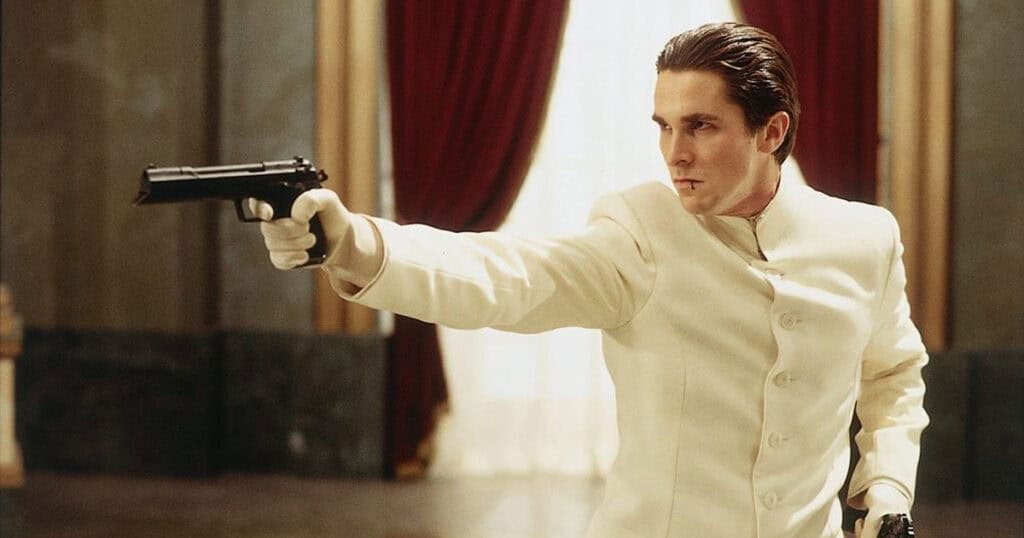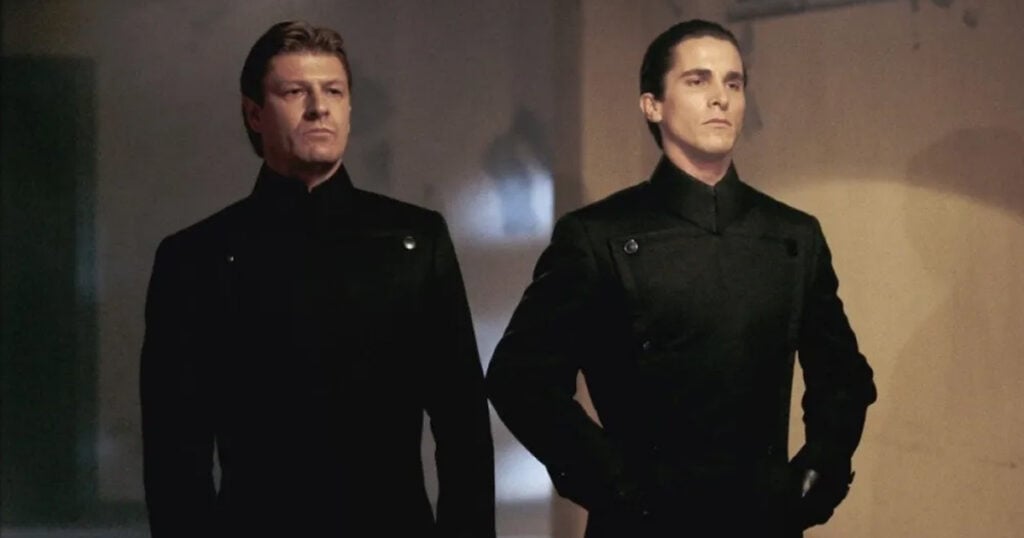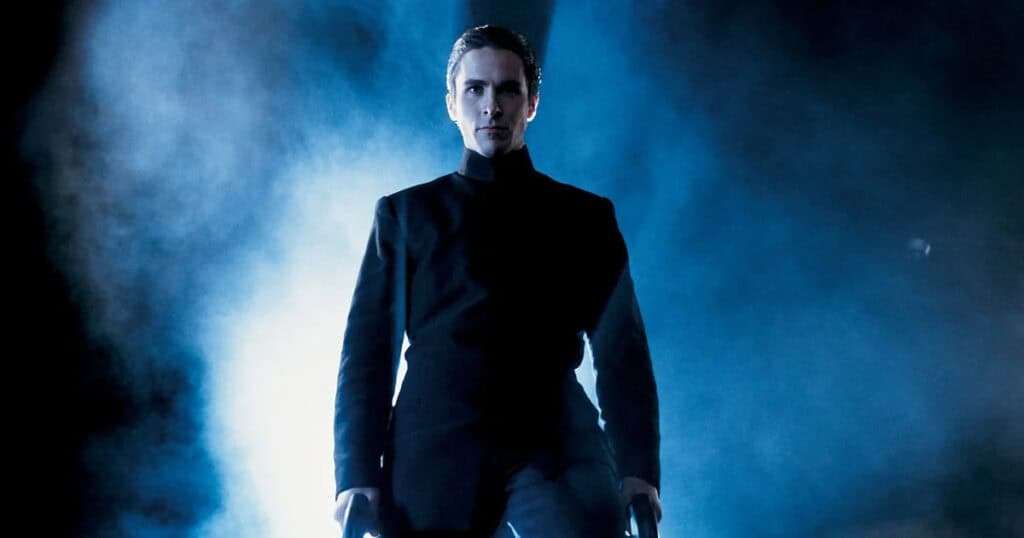Putting a dystopian future on the big screen was nothing new in the early 2000s, especially when set in the realm of science-fiction. But making it work also within the action genre is a monumental ask. Really, how often did an all-out action flick want to make its viewers think…especially when the plot revolves around thinking be illegal.
But Kurt Wimmer gave it a go with Equilibrium, which wondered what the world might look like under a totalitarian rule…if there was a lot of gunplay involved. Brushed aside by the studio, critics and moviegoers, Equilibrium has gone on to become a minor cult favorite (including here on JoBlo), something Wimmer could have never seen coming…Just don’t go comparing it to The Matrix in front of him…
So, take off your thinking cap and load up your pistols as we find out: WTF Happened to This Movie?!
Originally titled Librium, Equilibrium was first conceived in 1999, the same year that The Matrix came out – but we don’t dwell too much on that, lest Equilibrium’s writer/director, Kurt Wimmer, goes all gun kata on us.
The movie was originally said to be planned to be offered to Fox, but this didn’t pan out. Instead, the project would be set up at Miramax, particularly its Dimension Films offshoot. It, too, would receive major backing from Speed and Twister director Jan de Bont’s production company, Blue Tulip Productions, benefiting from a Dutch tax incentive stemming from de Bont’s heritage.
But this would be no easy sell. For starters, Wimmer was taking inspiration from the dystopian worlds of Ray Bradbury’s Fahrenheit 451, Aldous Huxley’s Brave New World and George Orwell’s 1984, sources that don’t exactly scream “action movie”. Set in Libria (Latin for balance), Equilibrium is set in a world where it is illegal to have any emotions of any kind – and it is enforced. And it will take one man to break free and lead an inevitable uprising…
The general idea actually stemmed from Wimmer entirely giving up on the art world, having studied Art History at the University of South Florida. He had started to find it all so phony and pretentious and so sought to remove himself. But he would soon find it ridiculous to rid himself of such feelings and emotions, although found further inspiration in the state of America, the idea of free thought being diminished reflecting the country at the time. As Wimmer put it: “At its core, Equilibrium is about a man learning to feel something for the first time. The entire futuristic world of Libria is really a convention we created to tell a powerful human story. Obviously, the film takes a certain amount of inspiration from Huxley, Orwell and Bradbury, who also used the paradigm of a future society, but this film has its own story to tell, the story of a man rediscovering what makes him human.”

Wimmer wouldn’t just find inspiration in literature; he also went to Hong Kong cinema, finding influence in the samurai lifestyle’s strict codes and conducts. “That’s how I developed the idea of a society ruled by a group of Warrior Monks who have honed themselves into rocks, physically and emotionally.”
Another hurdle would be Kurt Wimmer himself. While he had written The Thomas Crown Affair remake and served as story writer for Sphere, he only had one directing gig to his credit: an HBO movie starring Brian Bosworth…
Wimmer, too, would give it his best shot at not dating the story or setting, something we’ve seen far too many sci-fi movies fall victim to. That’s why he decided not to include futuristic tools, weapons or machinery, so it could conceivably take place at any point in the future. But for clarification’s sake, this “alternate reality” is set in 2072 after World War III. So we’ll see how well he did in another five decades!
As for why the title changed from Librium to Equilibrium: a pharmaceutical company actually already had the name!
Leading the cause would be John Preston, played by Christian Bale, who actually landed the job because of American Psycho. Everybody involved, chiefly Kurt Wimmer, knew Bale could handle the significant shift that Preston makes in the movie. Bale himself saw it as a challenge in how much he could reveal about the character without giving too much away about his inner self and his journey. Expectedly, Bale underwent extensive training in the ways of Asian-influenced fighting, including an eight-week course in judo.

Another key role – that of Andrew Brandt – would go to Taye Diggs, who had started to break through with roles in The Best Man and The House on Haunted Hill. While Diggs would be drawn to the screenplay, it was his smile of all things that led him to be cast. Like Bale, Diggs did his necessary research, further going on to read some of the books that inspired Wimmer’s script. As he put it, “I liked the combo of high octane action in a solid story with serious underpinnings. What really got me is that the core of the piece is the dynamics of human emotion, the idea that you have to let the human spirit thrive.”
Rounding out the central cast would be Bale’s Metroland co-star Emily Watson, who isn’t exactly known for her action prowess…but that’s because she’s never given a chance. But Watson still felt comfortable, saying, “She’s not that different from the intense, emotional and sacrificial women I’ve played in the past, but this time I also learned about the rigorous nature of special effects and action.”
The supporting cast would also feature Angus Macfadyen, Sean Bean, Matthew Harbour, and William Fichtner.
Armed with a $20 million budget, filming on Equilibrium began on October 19th, 2000 and wrapped up less than two months later on December 10th. By and large – and judging from the wealth of behind-the-scenes footage that was shot during the making of the movie – things went fairly smoothly during the production of Equilibrium.
One thing to note is the clever use of locations, particularly in Berlin, which has a lot of architecture that’s stuck in a certain era – that is, World War II. While Germany’s capital does have modern architecture, so much of it is directly linked to that era. Take, for example, the Olympiastadion, constructed for the 1936 Winter Olympics, which of course has direct ties to Nazi Germany; and the Tempelhof Airport, which underwent reconstruction by the Nazi government. That Libria’s flag has a stark resemblance to the Nazi flag is certainly no coincidence. Even in Rome the filmmakers couldn’t help but see ties to fascism, filming in the city’s Esposizione Universale Roma, a pet project of Benito Mussolini’s once chosen as the site of the 1942 World’s Fair. VFX supervisor Tim McGovern also made it his job to build on “fascist architecture”, which he was able to expand on during post-production, creating a world that is empowering over its people in deep and cold ways.
But we couldn’t talk about Equilibrium without its most notable elements: “gun kata”, a twist on the “gun fu” phase popularized in 1980s Hong Kong action flicks where guns serve as an extension of martial arts. On this, Wimmer, in an extensive interview, said, “Hong Kong action movies brought out the idea that if a man has two hands, he can shoot two guns but that’s as far as they took it. I wondered: Have we really hit the envelope for gun-play or is there somewhere new it could go?”
So what exactly is going on with it? As explained in the movie: “Each fluid position representing a maximum kill zone, inflicting maximum damage on the maximum number of opponents while keeping the defender clear of the statistically traditional trajectories of return fire. By the rote mastery of this art, your firing efficiency will rise by no less than 120%. The difference of a 63% increase to lethal proficiency makes the master of the gun katas an adversary not to be taken lightly.” If that doesn’t seem to make a whole lot of sense, don’t worry: it looks cool!
As for the extensive fight scenes, most of them were done in just one take because they didn’t have the time or the budget to set up any more. Thankfully, most of it worked out. Besides, Wimmer gave credit to Bale for, well, bailing him out of many shots by getting it in that one take.

So how do you market an action movie set in a post-WWIII dystopia? It’s not easy – and Miramax knew this. Wimmer would go on to claim that Miramax had no clue how to market a movie with both action and “intellectual depth.” Wimmer remembered Equilibrium testing through the roof, but that Miramax never saw a need to find a clear marketing strategy. While it was no doubt dumped unceremoniously into theaters, Miramax had also earned back money in foreign pre-sales, meaning they wouldn’t have to do anything special – or, as it turned out, anything at all – in the States, lest they be investing money they could easily lose.
And so, on December 6th, 2002, Miramax did release Equilibrium…on just over 300 screens. As such, on opening weekend, it took in $541,512, landing at 20th place, just behind Bowling for Columbine…then in its 9th week. For the numbers-savvy, that comes out to just $1,799 per screen. It would drop to 63rd before being yanked entirely by the end of the month. Its total pull? $1.2 million domestic and $4.2 million international.
As for the reviews, it currently sits at a 40% critic score on Rotten Tomatoes, with many lazily trying to draw comparisons to 1999’s The Matrix, something that Wimmer totally rejects, saying those that try it lack the knowledge of action cinema to be able to form a reasonable argument. (You can try to link it to The Matrix all you want, but if anything, it feels more like a precursor for Christian Bale to star in Christopher Nolan’s Dark Knight trilogy.)
Then again, Wimmer hates critics – or as he calls them: parasites. “F*ck the critics. Why would I make a movie for someone I wouldn’t want to hang out with? Have you ever met a critic who you wanted to party with? I haven’t.” When further asked what the solution to mankind’s problems would be, he added, “Killing all the mother fucking critics.”
While the critics score is a 40%, the audience score is double at 81%, in due part to the minor cult fandom EQUILIBRIUM has developed over the years. As Wimmer remembered, “The paying customers seemed to get it.” It’s just too bad so few actually paid to see it at the time.
Originally published at https://www.joblo.com/wtf-happened-to-equilibrium/




